Ministry of Science & Technology
DST institutes key drivers in Aditya-L1 mission: Design primary payload, first automated algorithm to detect CMEs
Posted On:
31 AUG 2023 6:03PM by PIB Delhi
India’s Aditya-L1, a space observatory with 7 payloads heading for a vantage point to study the Sun has started countdown for its journey. It had its beginnings in preliminary/initial discussions between the Indian Institute of Astrophysics (IIA) and Indian Space Research Organisation (ISRO) about possible observations of the solar corona using indigenous space based telescopes.
IIA, an autonomous institute of the Department of Science and Technology (DST), had initially proposed a ‘suitable coronagraph’ payload to be mounted on a small satellite offered by ISRO. This ‘suitable coronagraph’ later graduated to the Visible Emission Line Coronagraph (VELC) and still prevails as the primary payload, even as India’s Solar study ambitions expanded, making it a national initiative with multi-institutional collaboration.
Led by IIA, the VELC was designed, assembled, characterised, tested and integrated at Centre for Research and Education in Science and Technology (CREST) campus in Hosakote and delivered in close collaboration with ISRO. A Clean Room of international standard (India's first large-scale “Class 10” Clean Room) was constructed for the purpose inside its MGK Menon Laboratory. ISRO made the mirrors and detectors and provided them to IIA, while IIA delivered the completed VELC to ISRO on 26 Jan 2023.
The VELC will image the Sun's atmosphere, the corona, closer to the Sun than ever before, at high resolution and time cadence. The payload has 40 different optical elements of high precision and will be kept at a temperature of 22 degrees celsius in space. In addition, Aditya-L1 carries an ultraviolet imager, two X-ray spectrometers, and four in-situ instruments to measure plasma parameters. These are made by various centres of ISRO and IUCAA with contributions from many other institutions.
With the multi-wavelength imaging and spectroscopy of the Sun being a unique feature of this payload, it will study the diagnostics of the corona to understand the processes that heat the corona and accelerate the solar wind, study the drivers for space weather, measure the coronal magnetic fields, and investigate the origin, development and dynamics of Coronal Mass Ejections (CMEs). The two main science drivers are to understand the coronal heating problem and the propagation of violent plasma ejections that can affect satellites and communication networks at Earth. Since VELC observes the Sun closest to its surface, many other Aditya-L1 payloads also need its data about new coronal mass ejections and other eruptions.
The VELC Payload Operations Centre (POC) set up in IIA campus, will receive raw data from ISRO Indian Space Science Data Centre (ISSDC) and process them further to make it suitable for scientific analysis. The processed data will be sent back to ISSDC for dissemination. The scientific team at IIA will use the Aditya-L1 data from its many payloads in conjunction with field station observations on the ground to gain a deeper understanding of the Sun-Earth links and, more crucially, the space-weather impact. Kodaikanal Solar Observatory and Gauribidanur Radio Observatory of IIA will play a key role in this.
Working in tandem, IIA and Aryabhatta Research Institute of Observational Sciences (ARIES), another institute of DST, designed an automated algorithm to detect CMEs on board Aditya-L1 using the VELC instrument. It will be the first of its kind to track the huge bubbles of gas threaded with magnetic field lines that are ejected from the Sun, disrupting space weather and causing geomagnetic storms, satellite failures, and power outages. This algorithm has been hard-coded by ISRO and will be used to detect CMEs automatically on board Aditya-L1, making it one of the first onboard intelligence algorithms for this purpose as no similar thing has been attempted in previous NASA or ESA missions studying the Sun.
IIA and ARIES have jointly characterised the spectral and continuum channels of the VELC instrument and implemented advanced machine learning techniques to detect CMEs in coronagraph images. They are also conducting theoretical studies, including numerical simulations of oscillations and coronal mass ejections in the Sun, which will be crucial for interpreting data from Aditya-L1 instruments.
ISRO has also collaborated with ARIES to establish the Aditya-L1 Support Cell at ARIES. The Aditya-L1 Support Cell (AL1SC) acts as a community service centre for the guest observers in preparing science observing proposals and analyzing science data. This support cell will provide additional tools and train users about solar physics and provide help to understand, download and analyse the data from ISSDC/ISRO. AL1SC is conducting workshops in different parts of the country to familiarise students with the basic processes happening on the Sun, current open problems, the Aditya-L1 mission and observational data analysis --
The team from IIA & ARIES
Prof. R. Ramesh, IIA, the current PI of the VELC project along with the solar astronomy group of 15 faculty members, and almost 20 students completed the development and delivery of the VELC to ISRO
Prof. Raghavendra Prasad: Former PI of the VELC project who led the design, assembling, characterisation, testing and integrated at CREST, Hosakote
Prof. Jagdev Singh: He, along with his team, proposed for the initial coronagraph during primary discussions about possible observations of the solar corona using indigenous space based telescopes, and was the PI of the team during its early phase.
Prof. S.P. Rajaguru, Prof. B. Ravindra, Dr. Piyali Chatterjee, Dr. Jayant Joshi, Dr. C. Kathiravan, Dr. Wageesh Mishra, Dr. K. Nagaraju, Dr. Vmareddy Panditi, Dr. Tanmoy Samanta, and Dr. Ebenezer Chellasamy and Dr, Manjunath Hegde – total of 15 faculty members & around 20 students of Solar Astronomy group at IIA
S. Nagabushana, S. Kathiravan, Amit Kumar, P.U. Kamath from IIA led the mechanical, electronics, and component assembly and testing of VELC along with a large number of engineers and scientists from IIA who have been involved in every stage of VELC.
Dr. Sasikumar Raja leads the satellite integration activities of VELC and ground check-out. Dr. Muthu Priyal leads the development of the data pipeline for VELC.
Prof. Dipankar Banerjee, Director ARIES & Dr. Vaibhav Pant from ARIES had nurtured the Solar Physics group in ARIES into a 15 member independent solar physics group at ARIES, ready to use the data from Aditya-L1. They along with Dr. Ritesh Patel (now postdoc at South West Research Institute, USA) designed the first automated algorithm to detect coronal mass ejections (CMEs) on board Aditya-L1
Dr. Krishna Prasad Sayamunthala as well as 13 PhD students and Postdocs at ARIES who are currently researching various areas in solar physics related to Aditya-L1 mission.
Links for reference:
velc.iiap.res.in
https://al1ssc.aries.res.in
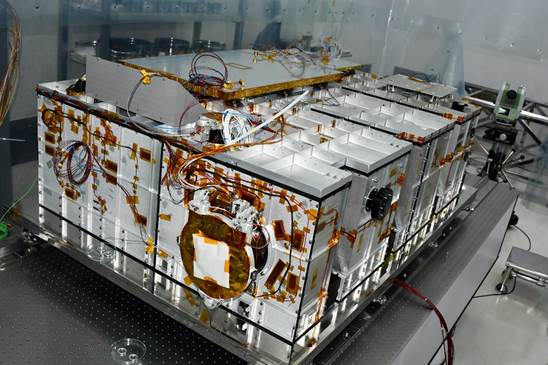
The Visible Emission Line Coronagraph (VELC) after its component integration and testing in the clean room at CREST, Hosakote, ready to be transported.
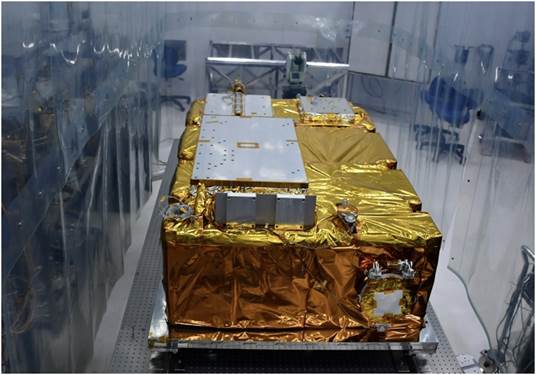
The Visible Emission Line Coronagraph (VELC) with the protective Multi-Layer Insulation (MLI) cover, before it was transported to ISRO for integration with Aditya-L1.
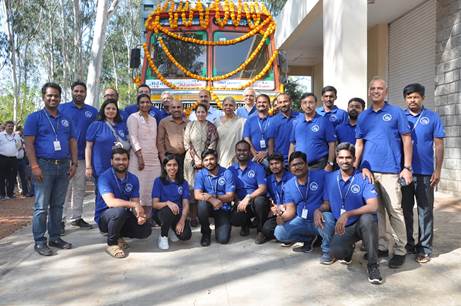
VELC Engineering Team Members in front of the truck which had the VELC all packed and ready to go to ISRO.
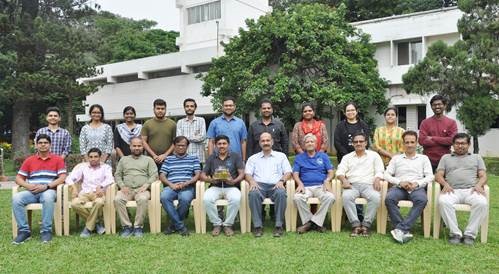
Faculty, students, postdocs in IIA who work on solar astrophysics
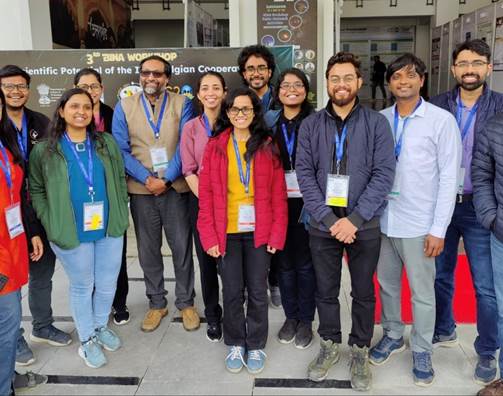
Solar physics group at ARIES
****
SNC/PK
(Release ID: 1953792)
Visitor Counter : 3344